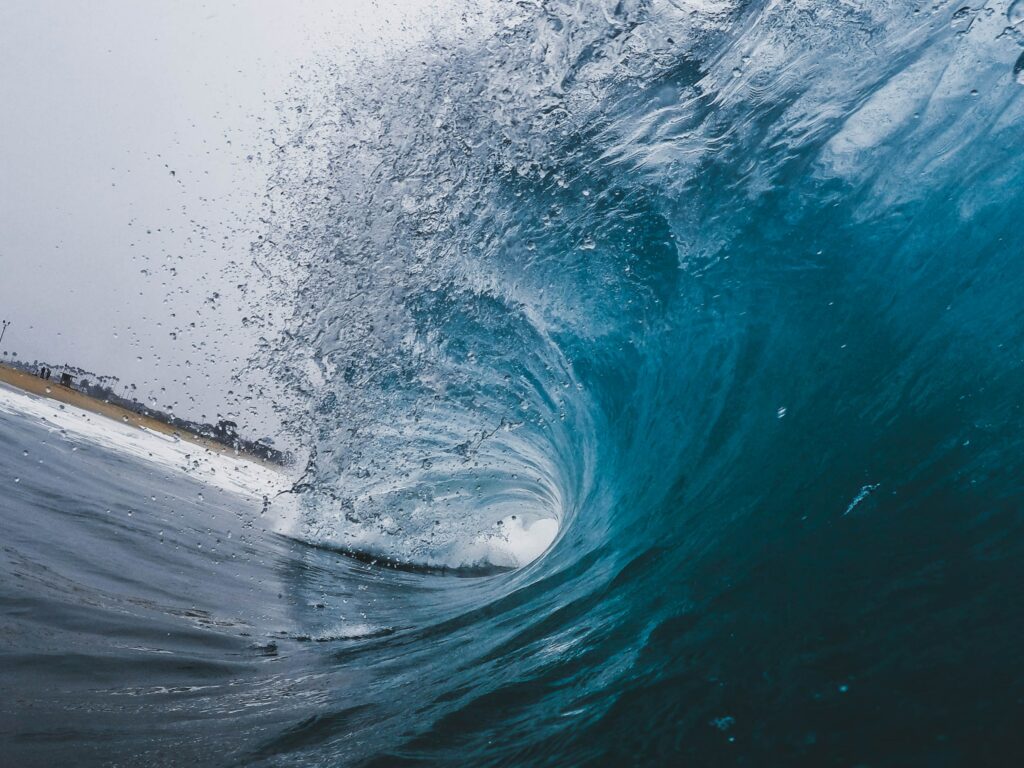Introduction to Weather Patterns: The Unsung Hero of Perfect Surfing Conditions
As a surfer, you know the thrill of catching the perfect wave. But, behind every great wave is the weather pattern that created it. From cyclones to high-pressure systems, understanding the meteorological forces that influence the ocean can equip us with the knowledge we need to predict surf conditions. Weather, as it turns out, is the unsung hero of perfect surfing conditions, crafting the waves we crave and helping us determine when to paddle out. It’s a whole lot more about than just waiting for a swell or looking for a clear sky.
The Importance of Understanding Weather Patterns for Surfers
Weather patterns can make or break a surfing expedition. They dictate the size, power, and shape of the waves that roll onto our favorite breaks. Having an understanding of, say, how a brewing storm off the coast will affect the courage of the waves, could mean the difference between a chilling surf session and a disappointing day on the shore. By learning how weather patterns behave, we can gain a deeper understanding of our surf environment, improve our wave-catching ability, and even avoid dangerous conditions.
Decoding Basic Meteorology: What Every Surfer Should Know
Meteorology, the science that deals with the atmosphere and its phenomena, plays a vital role in surfing. There are a few basics that every surfer should understand. For instance, Low-pressure systems often bring wave-producing wind and rain. High-pressure systems typically bring good weather but also flat surf. These basic principles form the foundation of weather prediction for surfing and, if understood, can guide you to an epic surf session.
The Role of Wind in Creating Waves: A Detailed Analysis
Wind is a critical element in wave creation, and understanding its nuances can significantly help predict surf conditions. Waves typically form when wind blows across the surface of the sea, pushing the water into peaks known as swells. The strength, duration, and fetch (the distance over which the wind blows) of the wind will determine the height, power, and size of these swells. For instance, strong onshore winds can turn the cleanest of breaks into a messy, choppy surf, while offshore winds can form hollow, barreling waves.
The Influence of Ocean Currents on Wave Formation: What You Need to Know
In addition to wind, ocean currents play a fundamental role in the world of surf. Waves travel in groups called wave trains, and when these trains encounter currents, their direction, speed, and shape can dramatically alter. These oceanic highways can either supercharge a swell, increasing its speed and height, or smother it, reducing its power and size. Understanding these currents is crucial in predicting where the best waves will break. In the end, the ocean is a vast, interconnected system, and even the smallest change in one area can have a ripple effect on surf conditions thousands of miles away.
How to Use Weather Forecasts to Predict Surf Conditions

Weather forecasts are a surfer’s best friend. They provide information about wind direction and speed, wave height, and the timing of swells. Being able to use this information to predict surf conditions is key to getting the most out of your surf session. Remember, a change in wind direction can change the surf conditions drastically – the best surf usually occurs with offshore winds. Similarly, wave height is not the only factor to consider when choosing your surf spot; consider wave period too, as it determines the quality of the surf.
Interpreting Real-Time Ocean Data: A Guide for Surfers
Surfing is not just about physical strength and balance; it also involves understanding real-time ocean data. Tide charts, buoy readings, and satellite images are all valuable tools in predicting surf conditions. Vigilant surfers can use this data to anticipate changes in wave size, speed, and direction. Understanding how to interpret these resources can greatly improve your surfing skills and enrich your overall surf experience. Remember, the more accurately you can read and interpret ocean data, the better prepared you’ll be to catch the perfect wave.
Risks Associated with Misinterpreting Weather Patterns: Staying Safe While Surfing
Safety should always be a surfer’s top priority. Misinterpreting weather patterns can lead to dangerous situations, like getting caught in a rip current, surfing in waters with unexpectedly large swells, or even getting caught in an approaching storm. Understanding weather patterns is vital in avoiding these risks. It’s always better to err on the side of caution when unsure about the conditions.
Expert Tips for Reading Weather Patterns: Insights from Pacific Surf School Professionals
Our professionals at the Pacific Surf School offer their expertise on reading weather patterns. Their tips include understanding local wind patterns, paying attention to unexpected changes in weather, and making effective use of available meteorological tools and resources. They stress the importance of local knowledge, as local wind patterns and atmospheric conditions can vary significantly from general weather patterns.
Unlock Your Surfing Potential by Becoming a Weather-Wise Surfer

Understanding weather patterns is much more than a simple addition to your surfing skills; it’s a substantial game-changer that elevates your surfing experience to a whole new level. It equips you with the knowledge to anticipate the coming of a good swell and avoid potentially dangerous conditions. Imagine being able to predict when those epic waves will appear, instead of merely hoping to catch one. When you truly understand the weather, you no longer merely chase the waves, you interact with them.
Surfing is much more than a sport—it’s an immersive interaction with the vast, mysterious ocean. It’s a dance—the rhythmic motion of your body on the board, the ebb and flow of the waves beneath you, and the wind on your face—all moving in rhythm with nature’s powerful orchestra. To surf is not only to understand the how, but also the why behind the deep blue waves.
The Surf School located in San Deigo can help you unlock this deeper understanding. Our skilled and knowledgeable instructors, backed by years of surfing experience, can teach you not just physical techniques, but invaluable lessons in wave prediction, safety, and respect for the ocean’s might. You will learn to understand the nuances of wind patterns, decode the secrets of ocean data, and more importantly, gain the confidence to handle various water conditions.
As the season kicks off, we call all wave seekers, ocean lovers, and thrill-chasers to join us. Whether you’re a beginner just getting your feet wet, or a seasoned surfer looking to up your game, our classes cater to all skill levels. The ocean is calling, and its secrets await you. Immerse yourself in the world of surfing, learn to read the weather like a pro, and let’s ride the waves together.
Let the Pacific Surf School guide you on this journey. Visit our website, check out our lesson offerings, and secure your spot today. See you in the waves, surfers!




